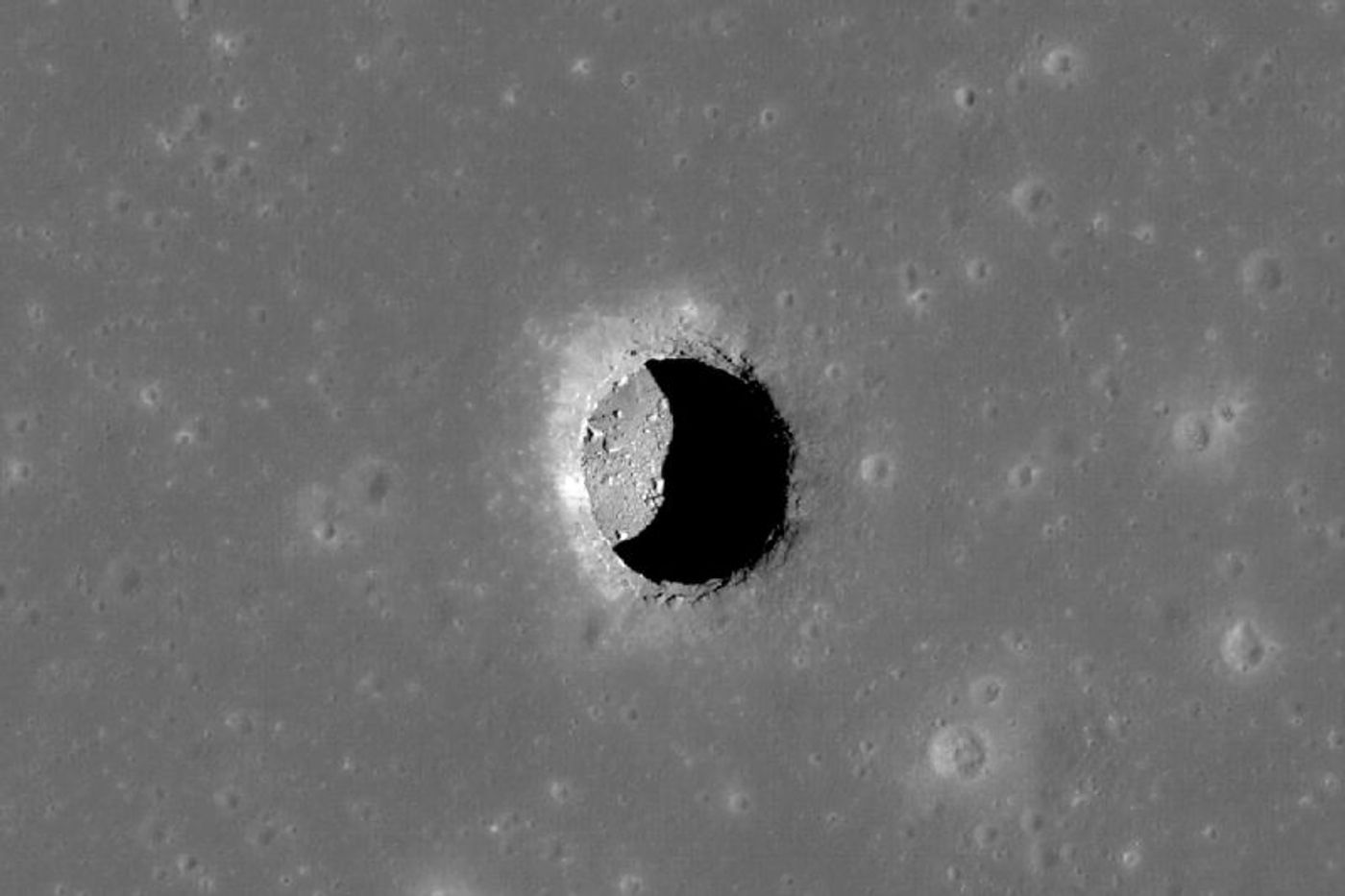Moon lava pits might be toasty environments for future astronauts
In a recent study published in Geophysical Research Letters, a collaborative research team from the University of California, Los Angeles (UCLA), and the University of Colorado, Boulder, have determined that a lava pit located in Mare Tranquillitatis on the Moon maintains a moderate temperature of 63°F (17°C). Since NASA plans on sending astronauts back to the Moon in the next few years, this could present an excellent opportunity for those astronauts by providing adequate shelter from the harmful solar radiation, cosmic rays, and micrometeorites that constantly bombards the surface.
The existence of lava pits on the Moon was confirmed by the Japanese Space Agency’s (JAXA’s) SELENE spacecraft in 2009 and has since sparked interest in potentially using these underground dwellings to be explored by future astronauts and rovers alike. Without an atmosphere, the Moon’s surface temperature can reach a searing 250°F (120°C) during the lunar daytime, and a less-than-chilly -208°F (-130°C) during its nighttime. Since the Moon’s rotational period is the same as its orbital period—27.3 days—this means each day and night lasts for half that period.
The study was led by UCLA PhD student, Tyler Horvath, who said probably 16 of the more than 200 pits are probably collapsed lava tubes. As seen on Earth, lava tubes are hollow tunnels that form when molten lava flows underneath a field of cooled lava or when a crust forms over a river of lava. If the lava tube ceiling collapses, it creates a pit that gives access to the rest of the tube. One such example is the Lava River Cave just outside Flagstaff, Arizona.
Using data from the Diviner instrument onboard the Lunar Reconnaissance Orbiter, the team was able to chart the pit’s temperatures over a period of time using 1-D, 2-D, and 3-D computer models. They concluded that pits located in Mare Tranquillitatis and another region known as Mare Ingenii are home to some of the most unique temperatures on the Moon.
Are other pits on the Moon capable of sustaining similar temperatures that future astronauts can use for shelter? Only time will tell, and this is why we science!
Sources: Geophysical Research Letters, NASA, Flagstaff.com,
As always, keep doing science & keep looking up!









